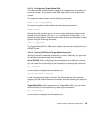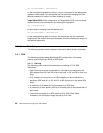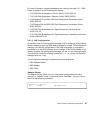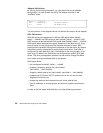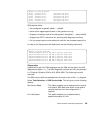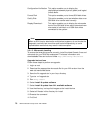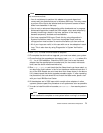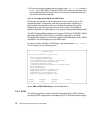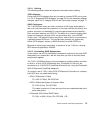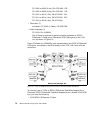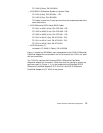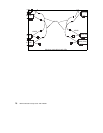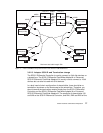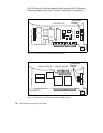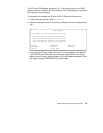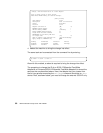Cluster Hardware and Software Preparation 73
3.3.2.1 Cabling
The following sections describe important information about cabling.
SCSI Adapters
A overview of SCSI adapters that can be used on a shared SCSI bus is given
in 2.3.2.3, “Supported SCSI Adapters” on page 26. For the necessary adapter
changes, see 3.3.2.3, “Adapter SCSI ID and Termination change” on page 77.
RAID Enclosures
The 7135 RAIDiant Array can hold a maximum of 30 single-ended disks in
two units (one base and one expansion). It has one controller by default, and
another controller can be added for improved performance and availability.
Each controller takes up one SCSI ID. The disks sit on internal single-ended
buses and hence do not take up IDs on the external bus. In an HACMP
cluster, each 7135 should have two controllers, each of which is connected to
a separate shared SCSI bus. This configuration protects you against any
failure (SCSI adapter, cables, or RAID controller) on either SCSI bus.
Because of cable length restrictions, a maximum of two 7135s on a shared
SCSI bus are supported by HACMP.
3.3.2.2 Connecting RAID Subsystems
In this section, we will list the different components required to connect RAID
subsystems on a shared bus. We will also show you how to connect these
components together.
The 7135-110 RAIDiant Array can be connected to multiple systems on either
an 8-bit or a 16-bit SCSI-2 differential bus. The Model 210 can only be
connected to a 16-bit SCSI-2 Fast/Wide differential bus, using the Enhanced
SCSI-2 Differential Fast/Wide Adapter/A.
To connect a set of 7135-110s to SCSI-2 Differential Controllers on a shared
8-bit SCSI bus, you need the following:
• SCSI-2 Differential Y-Cable
FC: 2422 (0.765m), PN: 52G7348
• SCSI-2 Differential System-to-System Cable
FC: 2423 (2.5m), PN: 52G7349
This cable is used only if there are more than two nodes attached to the
same shared bus.
• Differential SCSI Cable (RAID Cable)
FC: 2901 or 9201 (0.6m), PN: 67G1259 - OR -



